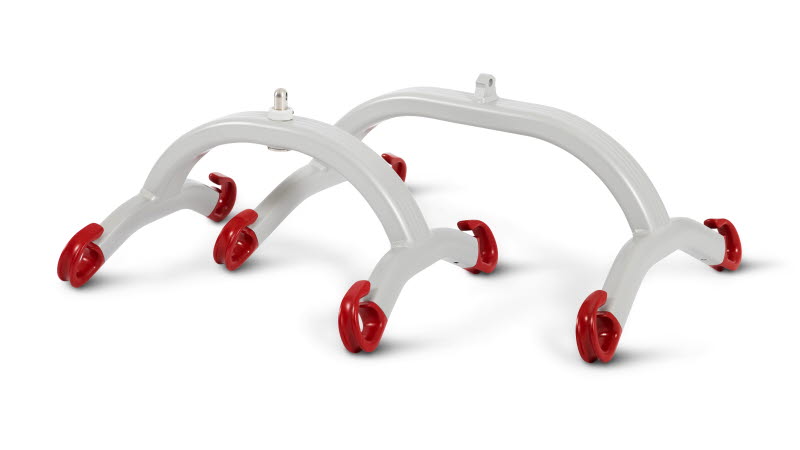Assessment of sling bar
When hoisting a person who suffers from pain - e.g., neuromuscular disorder, arthritis, or shoulder injury – the transfer can be compared to lifting an egg; we want to do it as gently, soft, and spacious as possible.
Therefore, it is important to consider the user's size and the lifting situation when choosing a sling bar. The following will describe what to consider when choosing the right sling bar for the user and the lifting situation.

The width of the sling bar
When assessing for the right size, measure the shoulder width of the user; the sling bar should have approximately the same length.
If the sling bar is too narrow the user might feel cramped and uncomfortable - and the respiration could be affected.
On the other hand, if the sling bar is much too wide there is a risk that the user is pushed forward in the sling because the head straps of the slings are being pulled outwards. This is especially important to think about when hoisting children and small adults.
Another aspect that can impact the lifting situation and the comfort for the user is the type of sling bar used – 4-point or 2-point.

Benefits of a 4-point sling bar
A 4-point sling bar may result in:
- A more reclined position
- The hip is more open
- The chest is expanded
- Leg supports are dragged away from the groin
- More space around or above the user’s head
- A short reach when attaching loops to the hooks
This sling bar is suitable for:
- Persons in pain
- Obese persons
- Persons with rheumatic or neuromuscular diseases
- Lifting from floor since the sling bar comes closer than a 2-point sling bar

Benefits of a 2-point sling bar
A 2-point sling bar has other benefits and is recommended for these lifting situations:
- When the lifting height is limited
- If a tighter lift is safer for the person; for instance, due to low muscle tone or a sling with a wide leg support opening
- Easier storage in tight spaces
Variants of Molift sling bars
Risk assessment
The situations mentioned above are only examples and do not in any way replace an individual risk assessment made by the carer - responsible for the user.



